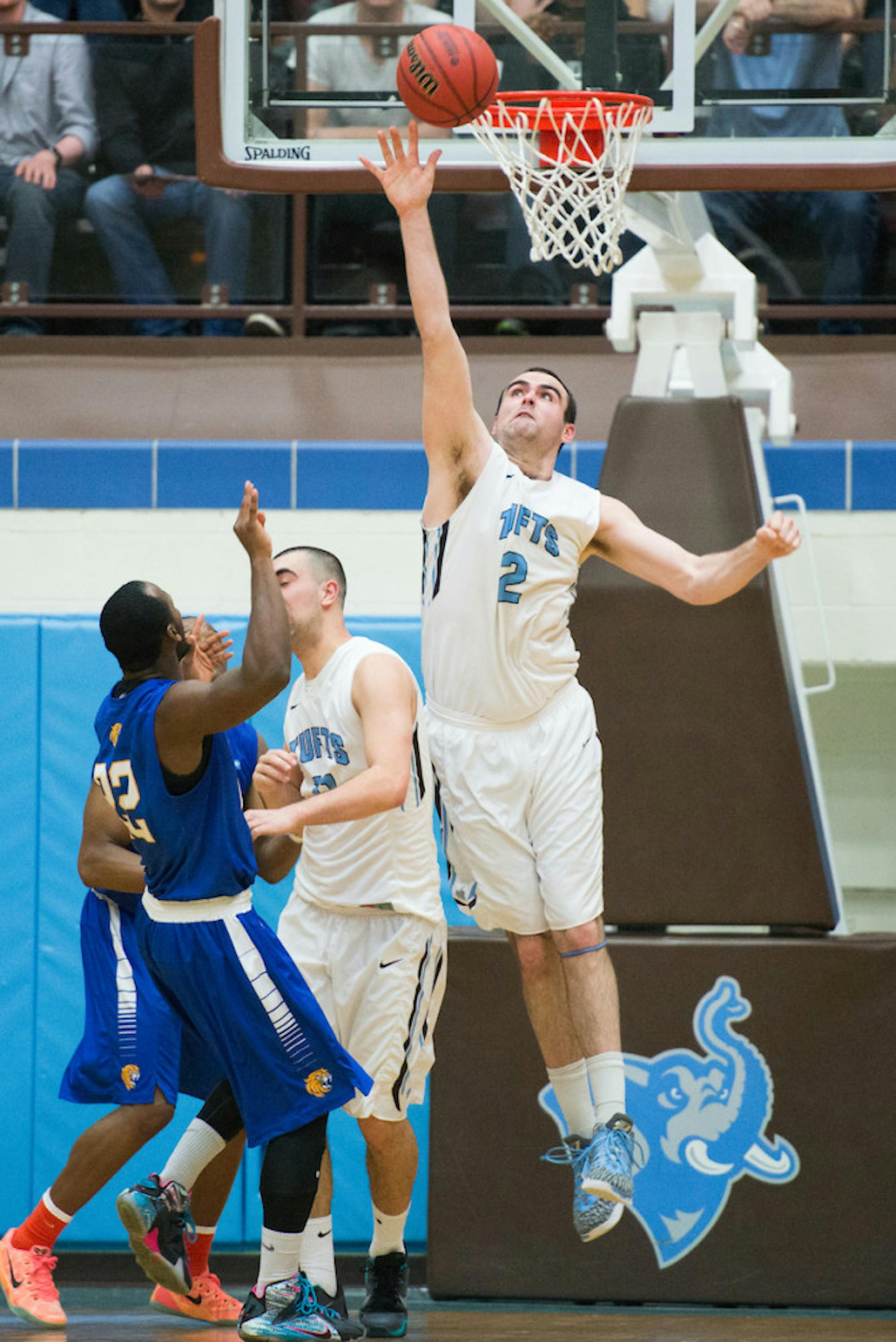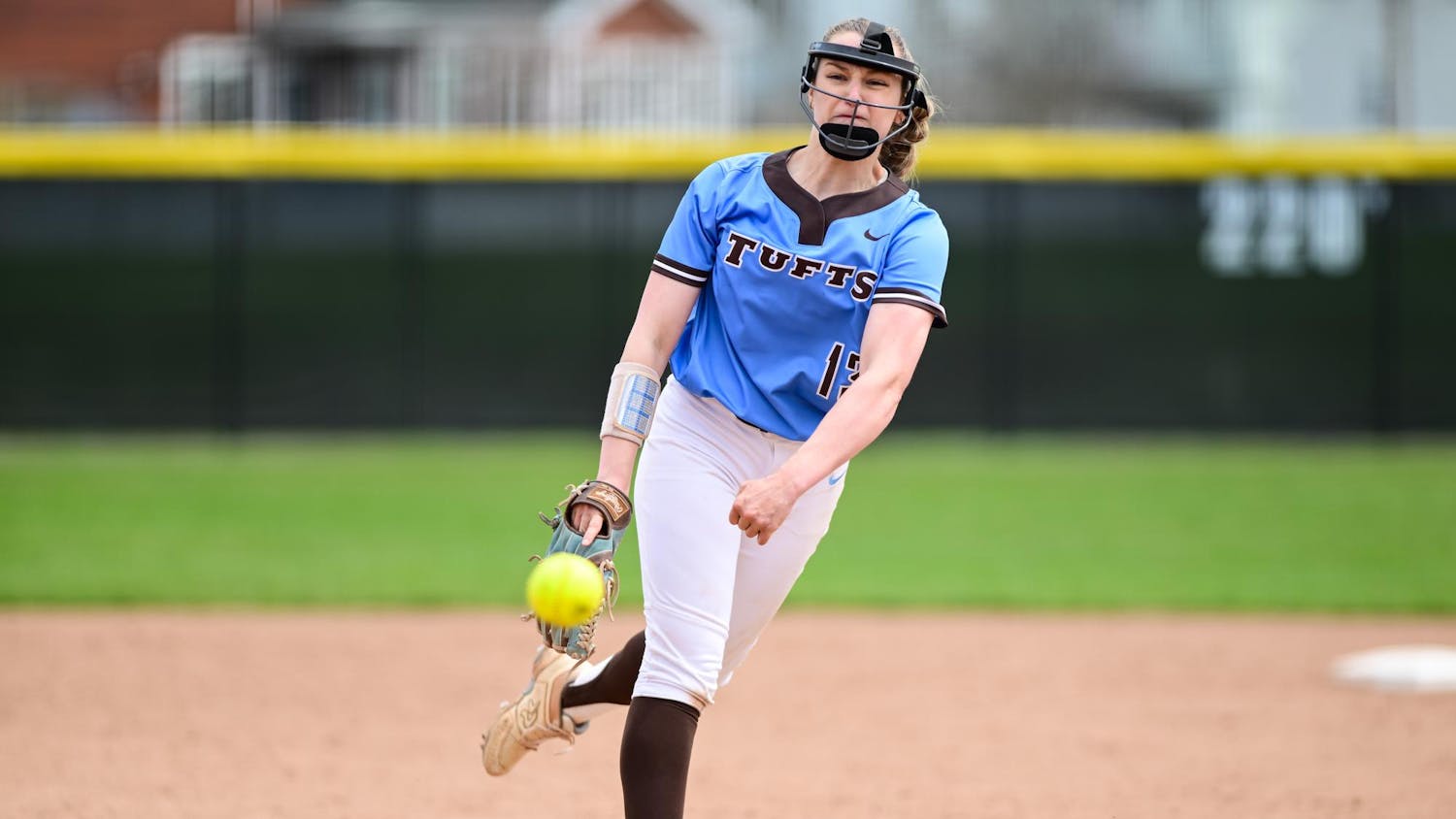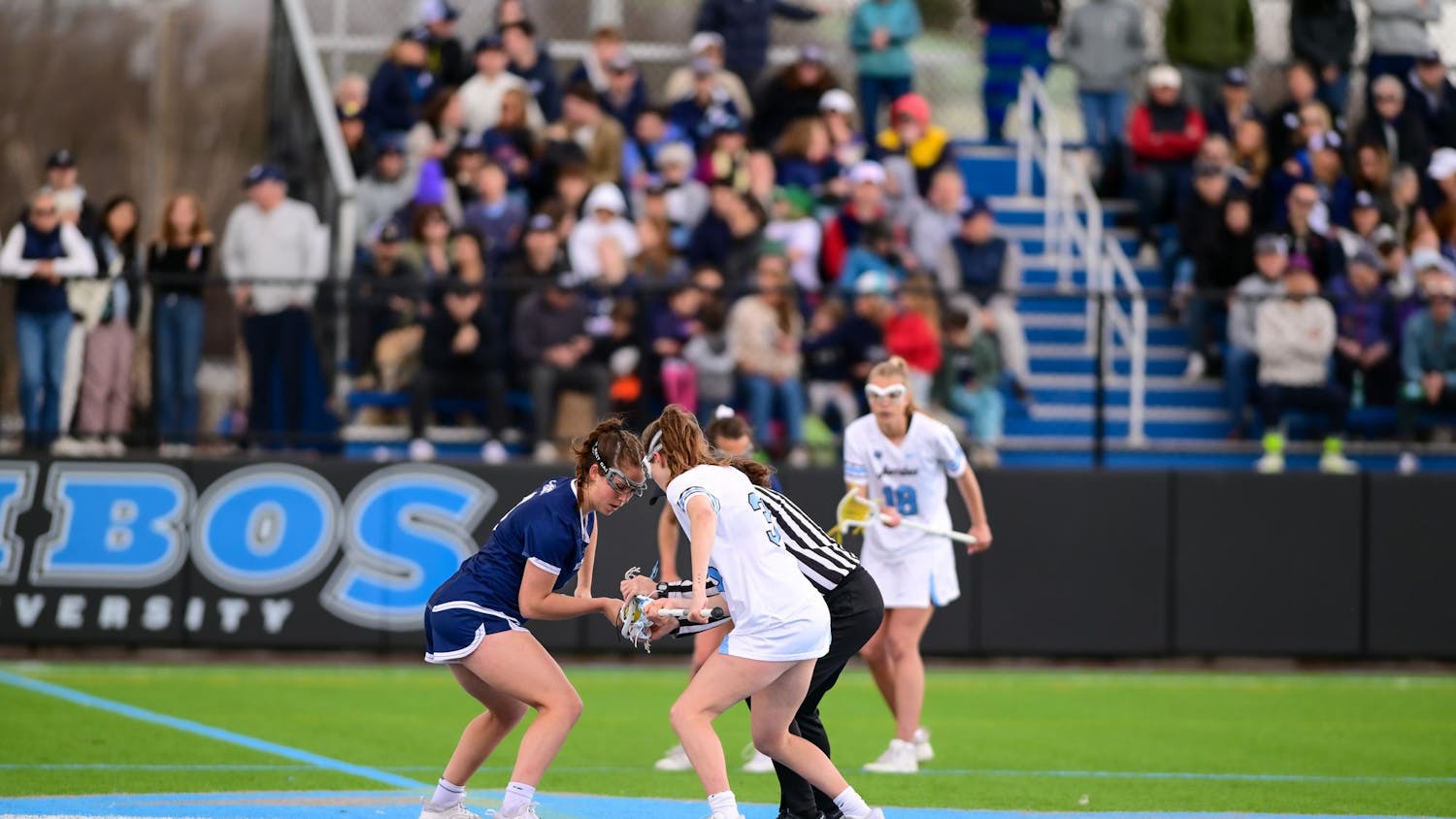Just five years ago, senior co-captain Tom Palleschi started his basketball career at Tufts completely unaware of the trying journey ahead of him. One of the most decorated players in program history, Palleschi was nearly permanently sidelined by a rare and life-threatening heart condition.
The Haverhill, Mass. native, who attended high school at Phillips Academy in Andover, became involved in the Tufts basketball program even before officially enrolling. Palleschi visited campus and met coach Bob Sheldon before the end of his senior year in high school, building the foundation for what would be a particularly long and deep-rooted relationship with the coaches, the players and Tufts.
“It will have been five and a half years,” Sheldon said. “Once he got in, he used to come down all spring just to get out of Andover for the afternoon. He would come down and play or sit in my office for hours. [His graduating is] going to be a huge loss basketball-wise because I think [Palleschi] is one of the best centers, if not the best, in Division III. As a person, we’re going to miss him because he’s a little bit bigger than life. He knew everybody at Andover, and it’s the same way here. Everybody knows him; he’s loud and he’s 6’8” so he stands out.”
Palleschi had a knockout season as a first-year, earning the NESCAC Rookie of the Year award and the D3hoops.com Northeast Region Rookie of the Year.
During his first season, Palleschi averaged 24.9 minutes a game, scoring an even 10 points per contest while shooting 51.3 percent from the field. He averaged six rebounds per game, making him the team's second-leading rebounder and fourth-leading scorer with 261 total points.
During the summer before his sophomore year, the Palleschi family was blindsided when Palleschi's father, Tom Palleschi Sr., had a severe headache, was rushed to the hospital and had emergency heart surgery after doctors realized he was suffering from an aortic dissection. Palleschi Sr.'s recovery was remarkable; the probability of him surviving the surgery alone was between two and 20 percent.
Knowing that the condition was genetic, Palleschi, along with his other male relatives, were subsequently tested. The results showed that Tom, as well as his uncle, also suffered from an enlarged aorta. The condition meant that Palleschi should not raise his heart rate above 140 beats per minute (bpm). He was also not a surgical candidate because Palleschi's aorta was larger than normal but not large enough to warrant surgery under the medical guidelines. Palleschi faced the reality that after just one season with Tufts, his basketball career was over.
“He was a big impact. He was Rookie of the Year freshman year in our league and in all of New England,” Sheldon said. “What happened was that he had worked out and was in the best shape of his life when he came back in his sophomore year. His father had had that trouble over the summer as well as his uncle, so they had tested him but didn’t know where he was at, so he went through three quarters of our fall workout, but he could have died.”
The aorta is the largest artery in the human body, responsible for carrying blood from the heart to the rest of the body. An enlarged aorta can cause aneurysms and weakening of the aortic wall. After learning of his condition, Palleschi took on a role as a team mentor and assistant coach, attending all practices and games.
For months, Palleschi's mother relentlessly pursued options for Palleschi to receive treatment. Her main worry was that day-to-day activities could bring her son's heartbeat above 140 bpm. In her opinion, it was not realistic for Palleschi to go about his daily life without letting his heart rate exceed 140 bpm, even without basketball, and he needed surgery to live a normal life. Thanks to her persistence, she found a doctor who agreed to operate. This reopened the possibility of a future basketball career and an unrestricted life for Palleschi.
Ahead of the surgery, Palleschi was put in touch with professional basketball player Jeff Green, who at the time played for the Boston Celtics. Green had undergone the same surgery for the same heart condition in January 2012, about two years before Palleschi's surgery. Palleschi was able to attend a Celtics practice and speak to Green, who reassured him about the procedure.
“He just said it really wasn’t that bad,” Palleschi said. “You think it’s terrible because you’re completely clamped open, but it’s not terrible at all, especially with the doctors you have. If anything, it makes you stronger afterwards, because now I have a double wide aorta because they give you a new aorta that your body makes a real aorta over.”
During surgery, a valve-saving aortic root replacement was performed, and as soon as Palleschi awoke after leaving the operating table, he was told that he would indeed be able to continue playing. After taking a semester off from school for the surgery, he returned fully recovered.
“[I knew] as soon as I woke up,” Palleschi said. “The only thing that would have hindered me coming back and playing was if my valve wasn’t okay. There were some things in the images that they couldn’t see — for example, I had a hole in my heart and they didn’t know that, so they fixed that up and that was fine.”
Palleschi returned to training on June 27, 2014, four and a half months after his Feb. 13 surgery. He chose a new jersey number, 2, to signify his second chance at basketball. Although his teammates were wary of Palleschi’s physical condition, they didn’t take it easy on him, and Palleschi quickly got back into shape.
Ahead of his return, Palleschi was elected captain by his teammates. He returned to the court on Nov. 15, 2014 against Johnson and Wales University, where he was the team’s leading scorer with 15 points.Although the team went 13-12 that season, Palleschi thrived. At the end of the 2014-2015 season, he was named to the All-NESCAC Second Team with an average of 12 points, 6.1 rebounds and 2.4 blocks per game.
Following his return, Palleschi received media coverage from several Boston newspapers, including the Boston Herald, Boston Globe and Eagle Tribune.
Palleschi and the entire Tufts program reached new heights in the 2015-2016 season. The team went 23-7 and hosted the NCAA Div. III Tournament for the first time in program history. Palleschi finished the season as Tufts’ second-highest scorer, with 15 points per game, and was one of only two players who started all 30 games in the season. Palleschi's 3.8 blocks per game led the NESCAC by a staggering 1.7 blocks per game margin. He also ranked third in the conference with 8.3 rebounds per game.
“Just seeing him go through that, a lot of players on the team took that to heart and started playing for a reason,” junior guard Kene Adigwe said. “We were coming off of a 13-12, very mediocre season, but everything he went through brought the team together and helped camaraderie and chemistry a lot.”
Re-elected captain last year, Palleschi was an integral part of the team both on and off the court. The Jumbos finished short of claiming a Div. III championship, falling in the NCAA quarterfinals to conference rival Amherst. But Palleschi's personal accolades piled high. He was named to the All-NESCAC First Team, the National Association of Basketball Coaches (NABC) All-Northeast Region Second Team and the D3hoops.com All-Region Second Team as well.
“The first year back, we were 13-12 and that was terrible, but last year it was an absolutely special group that we had," Palleschi said. "Getting to host the NCAAs was a stroke of luck because Amherst women hosted, so Amherst men couldn’t host. Being able to play here was great; hopefully we get crowds like that again. Making that run was unbelievable, especially making it to the Elite Eight. Hopefully, we can go farther this year. That’s the goal for everyone.”
In his final season as a senior, Palleschi was again re-elected captain, making him the program’s first three-year captain.
“I think [Palleschi’s brief role as a coach] did [impact how he is as captain]. He got to see it from another point of view,” Sheldon said. “He didn’t have to worry about playing or not playing because he knew he wasn’t going to play. He is my first three-year captain. Part of it was that he had gone through so much, but also he was older by then, and the team wanted to say ‘thanks for coming back.’”
Aside from his presence as a leader on the team, Palleschi is a dominant force on the court. Having twice been named to a NESCAC All-Conference team and having won NESCAC Rookie of the Year, he is one of the foremost players the program has seen.
Palleschi’s goal for this season is to advance further this season than the team did last season. He hopes to claim either the NESCAC Championship or an NCAA title. The team is 4-0 so far, its best ever start, so perhaps such achievements are within the Jumbos' grasp. The end of Palleschi's career will undeniably be a loss for the program — athletes with his playing ability and charisma are rare — but the team hopes to send him out with a championship.
Palleschi inspires Tufts basketball in final season






